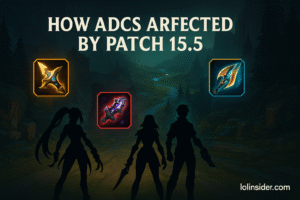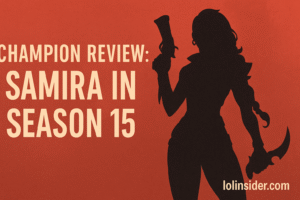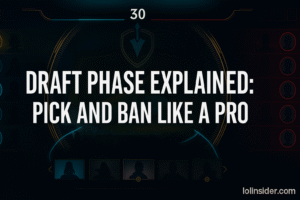Every year, the question of which regions are the strongest in 2025 ignites debates across the League of Legends community. With Worlds and MSI as global benchmarks, fans and analysts weigh historical dominance, recent results, and evolving metas to rank the big four competitive leagues:
- LCK (Korea) – Precision, discipline, and iconic legends.
- LPL (China) – Aggression, depth, and mechanical talent.
- LEC (Europe) – Creativity, resilience, and unpredictable strategies.
- LCS (North America) – Passion, imports, and slow-but-steady growth.
In 2025, the international balance has shifted yet again. Let’s dive into a full breakdown of how each region stacks up.
Chapter 1: A Historical Context
Before 2025, international League had clear eras of dominance:
- 2013–2016: Korea’s reign with SKT and Samsung dynasties.
- 2018: Europe’s rise with Fnatic and G2 reaching Worlds finals.
- 2018–2019: China’s golden age (IG, FPX).
- 2020–2022: A tug of war between Korea (DWG KIA, T1) and China (EDG, RNG, JDG).
- 2023–2024: Korea resurged with T1’s legendary Worlds 2023 run, but China’s depth remained unmatched.
Heading into 2025, the stage was set for Korea vs. China at the top, with Europe and NA fighting to prove they can keep pace.
Chapter 2: The LCK – Korea’s Enduring Dynasty
2.1 Key Traits
- Known for discipline and macro play.
- Produces the most legendary players (Faker, Deft, Ruler).
- LCK teams excel at adapting to new metas quickly.
2.2 2025 Highlights
- T1’s Legacy: Faker’s 2023 Worlds win solidified Korea’s modern dominance. In 2025, T1 continues to be a contender.
- Gen.G & KT Rolster: Still powerhouse organizations with consistent playoff runs.
- New Blood: Rookie mid laners and junglers bring mechanical edge to complement traditional macro style.
2.3 Strengths
- Best fundamentals in the world.
- Adaptability across patches.
- Experience under pressure.
2.4 Weaknesses
- Sometimes overly cautious against LPL aggression.
- Fewer “wildcard” strategies compared to LEC.
Verdict: In 2025, LCK remains a top-two region globally, still carrying the aura of inevitability at Worlds.
Chapter 3: The LPL – China’s Army of Titans
3.1 Key Traits
- Known for relentless aggression and mechanical excellence.
- More than 16 teams, with insane depth of talent.
- Prioritizes skirmishes and high-tempo gameplay.
3.2 2025 Highlights
- JDG & Top Esports remain at the top of the LPL, consistently fielding superteams.
- Regional Depth: Even mid-table LPL teams can upset global giants.
- International Presence: China continues sending four Worlds seeds, each capable of deep runs.
3.3 Strengths
- Massive player pool—always new prodigies.
- Aggressive playstyle often overwhelms slower regions.
- Consistently innovative in meta picks.
3.4 Weaknesses
- Can be inconsistent; “coinflip” moments in high-pressure games.
- Some teams collapse in best-of-5 endurance compared to Korea.
Verdict: In 2025, LPL is arguably the strongest region, with unmatched depth and ability to field multiple Worlds contenders every year.
Chapter 4: The LEC – Europe’s Wild Creativity
4.1 Key Traits
- Known for draft creativity and aggressive macro calls.
- Historically relies on strong mid/jungle duos.
- Produces global stars (Perkz, Caps, Rekkles).
4.2 2025 Highlights
- G2 Esports: Still Europe’s flagship team, mixing experience with fresh talent.
- Fnatic & MAD Lions: Remain competitive, occasionally punching above their weight.
- Rogue/Koi Rebuild: Continues producing solid playoff rosters.
4.3 Strengths
- Draft innovation catches other regions off guard.
- Teams embrace aggressive early-game plans.
- Fanbase and cultural presence keep the region energized.
4.4 Weaknesses
- Depth problem—only top 2–3 teams perform internationally.
- Consistency issues in best-of-5s against LCK/LPL.
Verdict: LEC holds its place as the clear #3 region. Capable of upsets, but still a step behind Korea and China in overall strength.
Chapter 5: The LCS – North America’s Struggle
5.1 Key Traits
- Relies heavily on imports (Korean/European talent).
- Historically weak international results.
- Passionate fanbase but constant roster instability.
5.2 2025 Highlights
- Team Liquid & Cloud9 remain NA’s biggest hopes.
- 100 Thieves: Still building around rookies, but results are mixed.
- NA at Worlds: Struggles to escape group stages consistently.
5.3 Strengths
- Strong infrastructure and salaries attract big names.
- Veteran players with fan recognition.
- Potential to surprise in best-of-1 games.
5.4 Weaknesses
- Developmental pipeline remains weak compared to LPL/LCK.
- Struggles adapting to fast-paced metas.
- Consistency and confidence issues at Worlds.
Verdict: In 2025, LCS is still the fourth region, occasionally competitive but far from title contention.
Chapter 6: Wildcard & Emerging Regions
Though not as dominant, regions like PCS (Taiwan/Southeast Asia), VCS (Vietnam), and CBLOL (Brazil) continue to produce strong wildcard teams capable of upsetting major regions.
- PCS: Still competitive with disciplined play.
- VCS: Known for aggression, can upset mid-tier LEC/LCS teams.
- CBLOL: Passionate fanbase, but limited results internationally.
While they don’t rival the big four, these regions add spice to international tournaments.
Chapter 7: Pro Perspectives on 2025 Regional Strength
- Korean Analysts: Still confident that LCK fundamentals beat LPL chaos in best-of-5s.
- Chinese Analysts: Believe LPL’s depth and aggression overwhelm other regions in long tournaments.
- European Analysts: Emphasize draft creativity as their win condition.
- NA Analysts: Focus on long-term development of rookies instead of short-term imports.
Chapter 8: The Meta’s Influence on Regional Power
Meta shifts can decide regional strength:
- Tank-heavy metas: Favor Korea (LCK).
- High-tempo assassin metas: Favor China (LPL).
- Flex pick metas: Favor Europe (LEC).
- Scaling, late-game metas: NA sometimes benefits but struggles to execute.
In 2025, a skirmish-heavy jungle meta slightly favors LPL, but Korea’s ability to adapt keeps them close.
Chapter 9: Regional Rankings for 2025
1. LPL (China)
- Unmatched depth, most title contenders.
2. LCK (Korea)
- Still world-class, but just behind China in depth.
3. LEC (Europe)
- Competitive, creative, but inconsistent.
4. LCS (North America)
- Competitive spirit, but lagging behind.
Chapter 10: The Future Beyond 2025
Looking ahead, the balance of power may shift:
- Korea’s infrastructure ensures they’ll remain strong.
- China’s massive player base guarantees new talent.
- Europe could rise again if rookies like Caps once did become international stars.
- North America needs to invest in grassroots development to close the gap.
Conclusion: The Global Rift in 2025
So, which regions are the strongest in 2025?
- China’s LPL currently edges out as the strongest, thanks to depth and aggression.
- Korea’s LCK remains just behind, with unrivaled fundamentals and experience.
- Europe’s LEC holds onto third place with creative draft strategies.
- North America’s LCS continues to struggle internationally, despite infrastructure.
League of Legends is a game of shifting metas, generational talent, and international rivalries. While the current power balance favors Asia, the future always holds surprises—because on the Rift, anything can happen.







